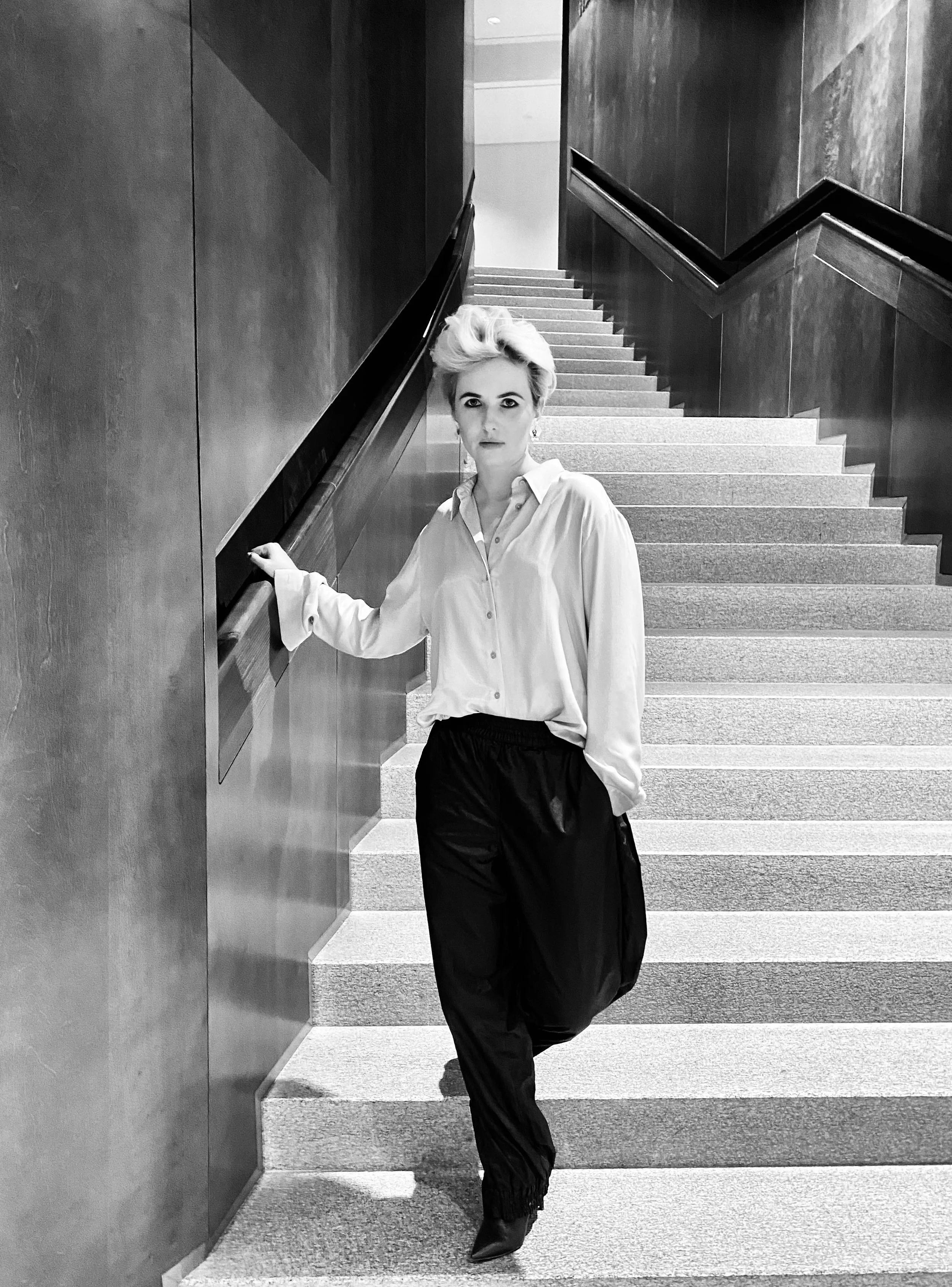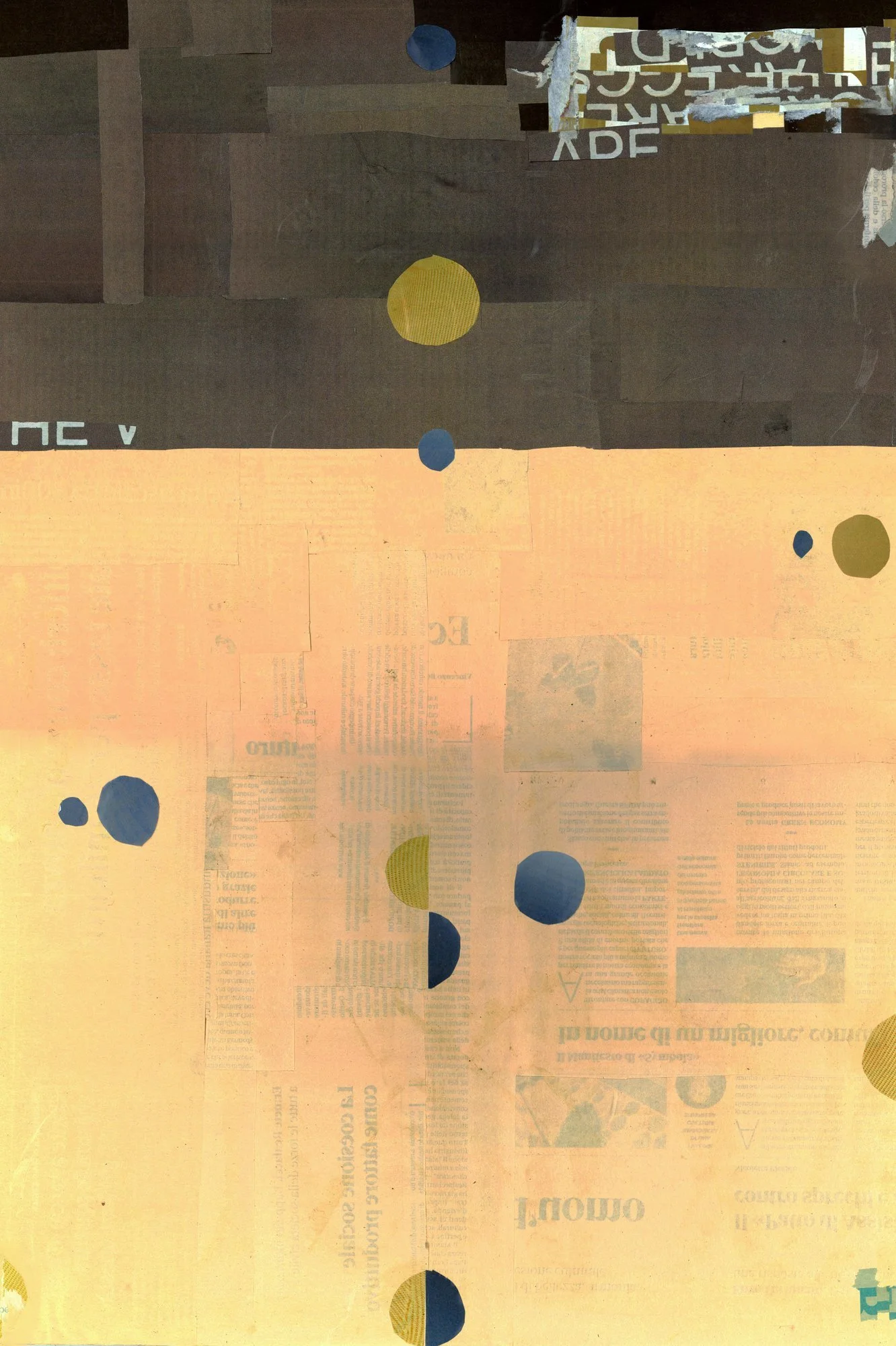10 Questions with Agnieszka Stopyra
Agnieszka Stopyra (born in 1988) is an illustrator and graphic designer. In her fashion illustrations, she combines an expressive use of lines and subtle patches of colour, and in her graphic designs, she uses collage and combines it with surrealism and pop art, which she absolutely loves. The main theme in both these spheres is a woman with a whole spectrum of emotions, anxieties, inspirations, and her own micro-worlds.
Stopyra has cooperated with top Polish and international brands, for example, PANDORA, Kulczyk Foundation, Samsung, MAC Cosmetics, Elle, and Nobu Hotel Warsaw.
Her illustrations are in many private collections. She has taken part in several group exhibitions, including two connected with the biggest fashion weeks in Poland.
Agnieszka Stopyra - Portrait
INTERVIEW
Let's talk about yourself first. Why are you an artist, and how did you become one?
Oh, I love the word: artist. It has some magic in it, and that is why I rarely use it. I rather say that I deal with art, and art has always been in my life. At some point, I decided that the visual language, the language of art, is my way of communicating with the world, my microworld. From then on, my choices were obvious and subordinated to it.
You work primarily with illustration and graphic design. Why did you choose these mediums specifically over other mediums?
The traditional illustration gives us incredible freedom, and working with a white sheet of paper is almost mystical. It is a truly magical feeling that can't be replaced by any graphic equipment, which is why I love drawing so much. And in this act, there is this element of individualism, space for inaccuracy which cannot be removed or erased. These works are one of a kind, unrepeatable. Collage, on the other hand, the other medium which I use, allows me to create new unique, creative relations and explore other ways to connect scraps of different worlds. In this way, I discovered my great love for surrealism and pop art.
© Agnieszka Stopyra
© Agnieszka Stopyra
© Agnieszka Stopyra
How would you define yourself as an artist?
At this point in my life, the term "seeker" is close to my heart. And I think it is the kind of artist I am today: a seeker, exactly.
What messages are you trying to communicate with your art? And what do you think differentiates your approach from others?
These are quite difficult questions because usually I just create, driven by an impulse, emotions, and movements, and sometimes something just fascinates me, and I want to delve into a given topic or direction. I think that art has a lot to do with evocation, in a certain externalization of oneself and one's emotional layer, the process of dealing with the complexities of the world, and it is probably common to all artists. And what form of this manifestation they choose is an individual matter for each of them.
© Agnieszka Stopyra
© Agnieszka Stopyra
In your statement, you say that you mix surrealism and pop art in your work, which are your biggest sources of inspiration. Do you have any artist you look up to or an artist that particularly inspires you in your work?
I adore surrealism. I almost obsessively return to this art movement full of fears, inspiration, ambiguity, and chaos. Surrealism surprises me with its non-obviousness, confusion, and being on the edge of life and dream. It's like fumbling with your imagination and trying to enter your subconsciousness. You're a little afraid of what you'll find there, but the temptation is incredibly huge. Magritte and Dali are my favorites, although I must admit that I often reach for what is typical for pop artists. Putting everyday things on a pedestal, rediscovering the magic of what has become invisible in the everyday world. Recently, once again, I have reached for Warhol's biography, and he continues to fascinate me.
© Agnieszka Stopyra
A key theme in your work is the woman, with all her emotions and peculiarities. How much of your personal experience can we find in your work?
A lot, I'm afraid, perhaps even too much for me to dare to delve into it. The woman in my illustration has rarely been clear and fully defined, and more often, it was her outline, metaphor, or simply a theme that was firmly embedded in the female world. Now, however, I am surprised and curious to see that this metaphor is barely flickering, and I'm starting to focus more and more on this layer between the worlds, emotions, something that I call synesthesia, something undefined. There are a lot of allusions, corporeality, and metaphors in it, and at the same time, it is firmly rooted in the already-mentioned surrealism.
Perhaps in this inner layer of me, there is something that is at the stage of change and exploration, and this undoubtedly has a significant impact on my work. Recently, I have forgotten for some time that my art is a carrier of great knowledge about myself, that sometimes I wander around and do not search for certain answers exactly in what I do because it is, after all, my language, my personal message and my link with the world.
How has your art evolved over the years? And what inspired you to experiment?
I think that the need for creative experimentation was simply the result of a certain change in me. You can probably say that in a world full of stimuli, it's easy to find inspiration, that in fact, fascination can be found everywhere, but the real artistic change is probably caused by the internal one.
© Agnieszka Stopyra
What about the color you use? In this series, there is a predominance of the color purple. Does this color mean anything in particular to you?
Yes, it's very interesting because only after some time I realized that almost all the works sent with this interview are based on the color purple and its shades. When I think about it, the word which comes to mind is: transcendent. I guess I've had a lot of searching lately, indefiniteness, lack of shapes; maybe reaching for such abstract concepts is some form of defining what is currently indefinite for me.
You work with digital collages. What is your stand on NFTs and digital art? Are you incorporating this medium in your production as well?
I had a brief moment of fascination with NFT, but this fascination is over. I am close to digital art because I do not like analog collages. I prefer the digital version, which is closer to photomontage. And I definitely prefer the sale of single works or the so-called limited editions, in limited quantities. It's like protecting something important too.
© Agnieszka Stopyra
And lastly, what are your plans for the future? Do you have any exhibition or collaboration you want to share with our readers?
I have just completed a project which was unique to me, THE SPECIAL INGREDIENT, which was carried out together with NOBU Hotel Warsaw and Nobu Restaurant. These are eight unique works that are a tribute to the unique flavors of Nobu cuisine and oscillate around synesthesia (connection of the senses) and my favorite art movements: pop art and surrealism. The special ingredient, however, goes beyond the culinary world - it is a certain symphony of our secrets, memories, and imaginations, which creates our aesthetic microworlds, sometimes an underestimated component of our lifestyle. It is also an attempt to show that food is not only a euphony of smells and tastes but also a kind of art: an evoker of emotions, a feast for the senses (synesthesia) and imagination (art), an encouragement to change the perspective and refresh the view on food and its presentation/ form of application. Each work is a visual invitation to the secrets and extremely diverse flavors of Nobu cuisine, and through a peculiar juggling of perspectives, sizes, and proportions of individual elements, an attempt to capture the viewer's senses to draw them into an aesthetic game with lots of understatements, textures, colors, and allusions: these special ingredients. The project was crowned with an exhibition, and the works have become a permanent part of the NOBU collection. I dream of this type of cooperation and projects in the future, which is non-obvious, unique, and niche.
























